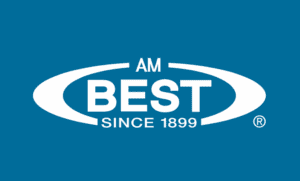Revealed – 10 largest health insurance providers in the US

Read more: AM Best on the state of the health insurance industry
How does health insurance work?
Health insurance is a policy designed to help offset the costs of medical treatment by covering a portion of the professional and hospital fees incurred. According to the government’s health insurance exchange website HeatlhCare.gov, this type of coverage comes in several forms aimed at meeting the varying needs of policyholders.
“Some types of plans restrict your provider choices or encourage you to get care from the plan’s network of doctors, hospitals, pharmacies, and other medical service providers,” the site explained. “Others pay a greater share of costs for providers outside the plan’s network.”
Among the kinds of policies currently available in the market, according to HealthCare.gov are:
Exclusive Provider Organization (EPO): This is a managed care plan where services are covered only if the doctors, specialists, or hospitals are in the plan’s network – except in cases of emergency.
Health Maintenance Organization (HMO): This type of health insurance plan often limits coverage to care from doctors who work for or are contracted with the HMO. Policies generally do not cover out-of-network care except in an emergency. Plans may likewise require that a policyholder live or work in its service area to be eligible for coverage. HMOs typically provide integrated care and focus on prevention and wellness.
Point of Service (POS): In this kind of policy, policyholders pay less if they access doctors, hospitals, and other healthcare providers belonging to the plan’s network. POS coverage also requires the insured to get a referral from their primary care doctor for them to see a specialist.
Preferred Provider Organization (PPO): This health plan allows policyholders to pay less for healthcare if they choose to get treatment from providers in the plan’s network. However, they can also access doctors, hospitals, and providers outside of the network without a referral for an additional cost.
Read more: Millennials find health insurance too expensive: Survey
Health insurance plans are also offered in four categories based on how the costs are split between the policyholder and the insurer. These are Bronze, Silver, Gold, and Platinum. HealthCare.gov noted, however, that the category “[has] nothing to do with [the] quality of care.”
Below is the estimated split for each category.
Category
Health insurer
Policyholder
Bronze
60%
40%
Silver
70%
30%
Gold
80%
20%
Platinum
90%
10%
Source: HealthCare.gov
Bronze plans have the lowest monthly premiums, but policyholders will need to pay higher out-of-pocket costs before the policy kicks in. The opposite is true for Platinum coverage, which has the most expensive rates but the cheapest deductibles.
Read more: Top health insurance providers for self-employed Americans
What does health insurance cover?
One of the changes the Affordable Care Act (ACA) has implemented in the country’s healthcare system is the standardization of insurance plan benefits. Prior to this, the benefits offered by insurers varied significantly between policies. Currently, US health insurance plans are required to cover a list of 10 “essential health benefits,” consisting of:
Ambulatory patient services
Emergency services
Hospitalization
Pregnancy, maternity, and newborn care
Mental health and substance use disorder services, including behavioral health treatment
Prescription drugs
Rehabilitative and habilitative services and devices
Laboratory services
Preventive and wellness services and chronic disease management
Pediatric services, including oral and vision care
Dental and eye care coverages for adults are not considered essential benefits but are available as optional add-ons, along with medical management programs.
Birth control and breastfeeding coverage, meanwhile, are also required benefits.
Read more: Ex-NBA player pleads guilty in health insurance fraud case
How much does health insurance cost?
According to HealthCare.gov, insurance companies can only account for five factors when determining premiums under the healthcare law. These are:
Age: Premiums can be up to three times higher for older people than for younger ones.
Location: Differences in competition, state, local regulations, and cost of living also impact health insurance rates.
Tobacco use: Insurers can charge tobacco users up to 50% more than those who do not smoke.
Individual vs. family enrollment: Insurance providers can also charge more for a plan that also covers a spouse and dependents.
Plan category: The different plan categories – Bronze, Silver, Gold, and Platinum – also has an effect on premium prices.
The government website noted that states can limit how much impact these factors have on insurance rates but prohibited them from using medical history and gender in calculating premiums.
“Insurance companies can’t charge women and men different prices for the same plan,” HealthCare.gov explained. “They also can’t take your current health or medical history into account. All health plans must cover treatment for pre-existing conditions from the day coverage starts.”
Read more: US health insurers struggle to cope with the pandemic’s challenges
What are the top health insurance companies in the US?
The 10 leading health insurance companies in the US wrote almost 57% of all policies in the market, according to the latest figures from the National Association of Insurance Commissioners (NAIC), with those in the top five accounting for 41%.
These providers offer basic health insurance products to individuals and businesses – along with other services that can include Medicaid and Medicare policies, long-term care insurance, dental coverage, and vision benefits.
These are the largest health insurance providers in the country ranked according to direct written premiums based on NAIC’s data.
1. UnitedHealth Group
Headquarters: Minnetonka, Minnesota
Direct written premiums: $195.4 billion
Market share: 14.47%
Memberships: 49.5 million
States available: Nationwide
A diversified health and well-being company, UnitedHealth Group’s core capabilities are clinical expertise, advanced technology, and data and health information.
UnitedHealth serves clients and consumers in the US and more than 130 other countries through two distinct platforms. UnitedHealthcare, which boasts a network of more than 1.3 million physicians and healthcare professionals and 6,500 hospitals, provides healthcare coverage and benefits, while Optum offers information and technology-enabled health services. The group invests more than $4 billion in technology and innovation and processes approximately 1.1 trillion transactions annually.
2. Kaiser Foundation
Headquarters: San Francisco, California
Direct written premiums: $107.8 billion
Market share: 7.98%
Memberships: 12.6 million
States available: All or parts of California, Colorado, Georgia, Hawaii, Maryland, Oregon, Virginia, Washington, Washington, D.C.
Kaiser Foundation Health Plan, Inc. operates as a non-profit healthcare organization. The organization provides budget-based plans, which can cover allergy, audiology, cardiology, dermatology, oncology, hospice, laboratory, nephrology, occupational therapy, pain management, pediatric rehabilitation, and pharmacy services. The insurer’s policies come with lower premiums and no deductibles and includes prescription drugs.
3. Elevance Health (formerly Anthem)
Headquarters: Indianapolis, Indiana
Direct written premiums: $93.8 billion
Market share: 6.95%
Memberships: More than 32 million
States available: California, Colorado, Connecticut, Georgia, Indiana, Kentucky, Maine, Missouri, Nevada, New Hampshire, New York, Ohio, Virginia, Wisconsin
Anthem changed its name to Elevance Health in June 2022. The health insurer provides medical, pharmaceutical, dental, behavioral health, long-term care, and disability plans through affiliated companies, including Anthem Blue Cross and Blue Shield, Empire BlueCross BlueShield in New York, Anthem Blue Cross in California, Wellpoint, and Carelon. Elevance Health boasts a network of 1.7 million doctors and hospitals in 14 states and is the largest for-profit managed health care company in the Blue Cross Blue Shield Association.
4. Centene
Headquarters: St. Louis, Missouri
Direct written premiums: $82.4 billion
Market share: 6.10%
Memberships: More than 26 million
States available: 29 states, including California, Florida, New York, and Texas – four of the largest Medicaid states
Centene Corporation, a Fortune 500 company, is a diversified, multinational healthcare firm providing a portfolio of services to government-sponsored healthcare programs, focusing on uninsured and underinsured individuals. It is currently the largest Medicaid managed care organization in the country.
Centene operates local health plans and provides a range of health insurance products. It also partners with other healthcare and commercial groups to offer specialty services, ranging from behavioral health, dental benefits, life and health, and pharmacy benefits management to care management software, correctional healthcare services, in-home health services, managed vision, specialty pharmacy, and telehealth services.
5. Humana
Headquarters: Louisville, Kentucky
Direct written premiums: $79.6 billion
Market share: 5.90%
Memberships: More than 20 million
States available: Nationwide
Humana’s cultural foundation is aligned with helping members achieve their best health by providing personalized, simplified, whole-person healthcare experiences. Recognizing that each person, family, and community’s healthcare needs continue to evolve, Humana creates innovative solutions and resources to help people live the healthiest lives on their terms – when and where they need it.
6. CVS Health
Headquarters: Woonsocket, Rhode Island
Direct written premiums: $74.3 billion
Market share: 5.51%
Memberships: More than 23 million (medical benefits)
States available: Nationwide
CVS Health is a healthcare innovation company, which aims to help people on their path to better health. It has more than 9,900 retail locations, nearly 1,100 walk-in medical clinics, a pharmacy benefits manager with about 100 million plan members, a diversified healthcare benefits company serving over 23 million medical members, a dedicated senior pharmacy care business serving more than one million patients per year, expanding specialty pharmacy services, and a standalone Medicare Part D prescription drug plan.
7. HCSC
Headquarters: Chicago, Illinois
Direct written premiums: $46.5 billion
Market share: 3.44%
Memberships: About 17 million
States available: Illinois, Montana, New Mexico, Oklahoma, Texas
Health Care Service Corporation (HCSC), a mutual legal reserve company, is the largest customer-owned healthcare insurance company in the US. The company offers a wide variety of life and health insurance products and related services through its affiliates and subsidiaries, including Dearborn Group, Dental Network of America, HCSC Insurance Service Company, Medecision, Availity, Prime Therapeutics, and TriWest Healthcare Alliance.
8. Cigna
Headquarters: Bloomfield, Connecticut
Direct written premiums: $34.1 billion
Market share: 2.53%
Memberships: More than 17 million
States available: Arizona, Colorado, Florida, Illinois, Kansas, Missouri, North Carolina, Tennessee, Utah, Virginia
Cigna’s insurance plans and products include healthcare insurance for individuals and families, dental insurance plans, Medicare plans, Medicare supplemental plans, other supplemental insurance, and international health insurance.
9. Molina Healthcare
Headquarters: Long Beach, California
Direct written premiums: $26.5 billion
Market share: 1.97%
Memberships: About four million
States available: Arizona, California, Florida, Idaho, Illinois, Kentucky, Massachusetts, Michigan, Mississippi, Ohio, Nevada, New Mexico, New York, South Carolina, Texas, Utah, Virginia, Washington, Wisconsin
Molina Healthcare, a Fortune 500 company, exclusively focuses on government-sponsored healthcare programs for qualified individuals and families. The company partners with state governments and serves as a health plan providing a wide range of quality healthcare services to individuals and families. It also offers a Medicare product and has been selected in many states to join in dual demonstration projects to manage the care for those eligible for Medicaid and Medicare.
10. Independence Health Group
Headquarters: Philadelphia, Pennsylvania
Direct written premiums: $22.8 billion
Market share: 1.69%
Memberships: More than eight million
States available: Southeastern Pennsylvania, 27 states through affiliates
Independence Health Group, along with its subsidiaries, serves clients in 27 states and the District of Columbia. A quarter of its customer network is based in southeastern Pennsylvania. The company serves various employer groups, from SMEs to national corporations. Among the services the insurer offers are commercial, Medicare and Medicaid coverage, pharmacy benefits management, workers’ compensation, and third-party benefits administration. The company is an independent licensee of the Blue Cross and Blue Shield Association.





